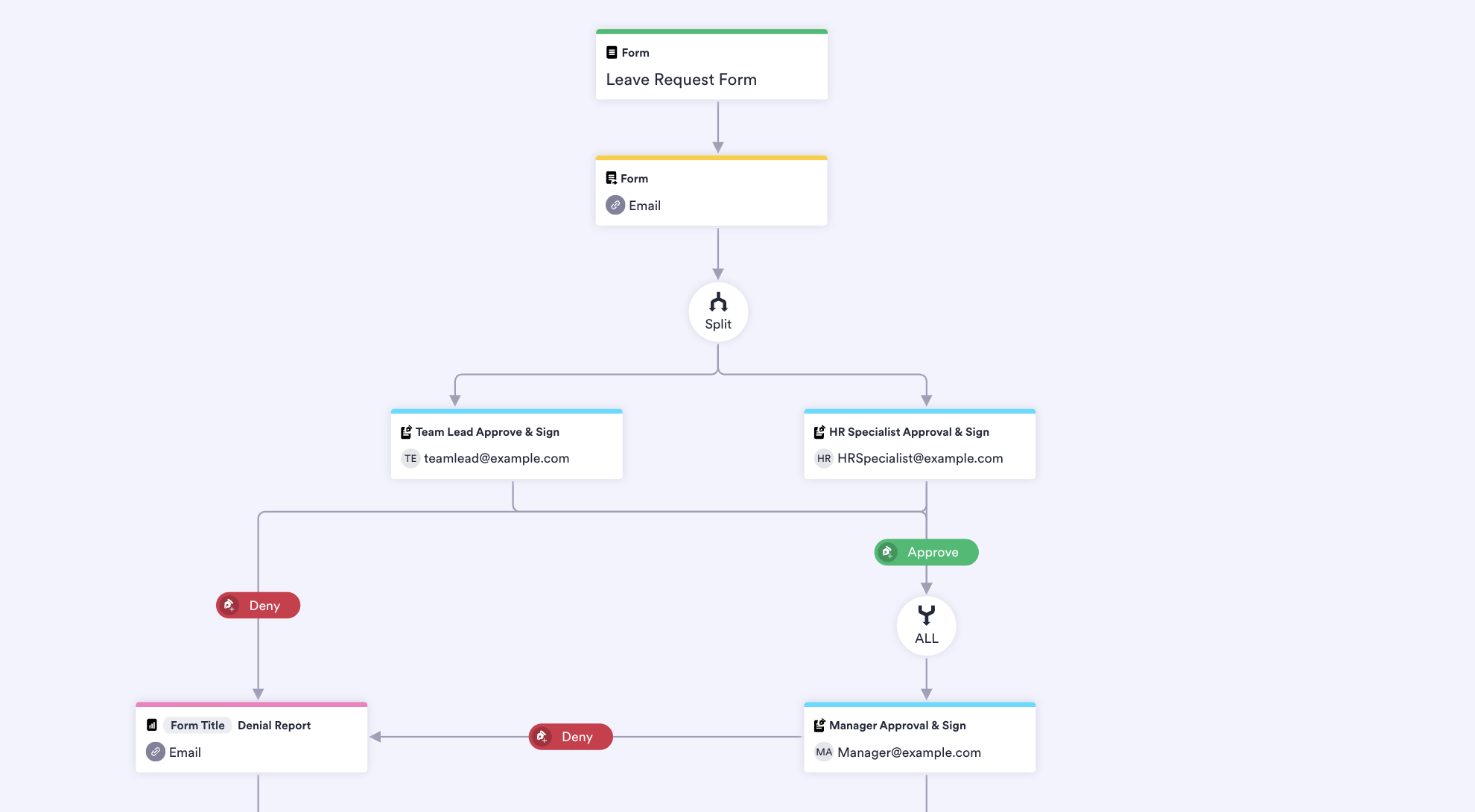Top 6 lean process improvement tools
- Try the kanban method with Trello
- Analyze bottlenecks with Simul8
- Map your value stream with Lucidchart
- Define value with AGENA3000
- Strive for perfection with Domo
- Automate with Jotform
In the 1950s, car manufacturer Toyota identified seven types of waste that were holding back its operations. It created a plan to minimize or eliminate them — and lean process improvement was born.
Lean thinking forced the entire Toyota leadership team to reassess their views of productivity and value and make serious company-wide changes. Though it wasn’t easy, it’s the primary reason Toyota is so successful today.
But what constitutes lean process improvement and how can you successfully introduce it in your company?
What is lean process improvement?
Lean process improvement revolutionizes how we work — the speed of production, how we collaborate with our colleagues, and the quality of the goods and services we provide. It’s a philosophy that helps companies eliminate waste and create value for their customers by following the five principles below.
1. Value
In lean thinking, value is defined by what the customer wants and how much they are willing to pay for it. You first need to understand value by conducting customer interviews and surveys and reviewing website data analytics, so your business doesn’t waste resources making products that don’t meet customer needs.
2. Value stream
Once you know how much of a product you need to create based on customer demand, you can map out its value stream (or workflow) all the way back to its raw materials, from parts and software to nuts and bolts.
3. Flow
Without flow, a (value) stream is just a still body of water — flow creates movement, helping it run more smoothly and powerfully. With the lean process, your company can transform from a slow-moving stream to a raging river.
You can achieve flow through proper communication, collaboration, and balanced workloads, while streamlining your workflow with automation to get the job done. To be truly effective and avoid bottlenecks, colleagues need to work together during this part of the lean management process.
4. Pull
“Pull” means producing exactly what’s needed at a given time, based on the value stream planning process, limited inventory, and just-in-time deliveries — rather than overproduction and exceeding quotas. By establishing a pull system, you’re “pulling work” based on demand, not forecasts. Just because you can produce mountains of inventory doesn’t necessarily mean you should.
5. Perfection
With lean process improvement, perfection is always the goal: perfect planning, perfect collaboration, and perfect goods and services. Or, at least, it’s the pursuit of perfection as you analyze and improve each work cycle before the next attempt. Striving for perfection and consistency results in fewer errors and less waste over time.
By implementing these five practices, you can minimize waste throughout your company. But why is it important?
Why should organizations improve their lean management systems?
First, reducing waste allows your business to make more money through improved lead times, productivity, and efficiency. Lean process improvement also allows for more sustainable practices, better employee and customer satisfaction, and a higher quality product.
And though it doesn’t happen overnight — it takes a bit to train everyone and work out the kinks using various lean management software — lean process improvement is worth considering, especially since powerhouse companies like Nike, John Deere, and Intel all use it.
Businesses rely on many tools to help them follow lean principles. Here are the six best tools to help everyone on your team practice lean process improvement.
Top six lean process improvement tools — and how to use them
1. Try the kanban method with Trello
Essentially a way to create a giant to-do list, the kanban method is an effective way to manage workloads and alleviate overburdened employees while still providing valuable, high-quality products and services to your customers.
By visualizing how work is flowing and which tasks are in progress, the kanban board template on Trello improves efficiency, increases productivity, promotes transparency, and enforces collaboration and teamwork across the organization.
2. Analyze bottlenecks with Simul8
Bottlenecks in production can severely cripple your bottom line, whether in lost revenue and time or unhappy, dissatisfied employees or customers.
Fortunately, by first outlining your delivery process and building a simulation in Simul8, you can identify where, why, and how bottlenecks occur. And thanks to Simul8’s low-stakes setting — where you can make digital changes without compromising your current workflow process — you can test process changes to ensure they work before introducing them in real-life scenarios.
3. Map your value stream with Lucidchart
At its core, value stream mapping (VSM) is about creating flowcharts designed to represent how information and material move through the production process. These give everyone a clearer visual picture of workflows.
With Lucidchart, you can transform your flat, whiteboard-based VSM process into an interactive and intuitive one. You can improve your analysis from beginning to end with various templates, including full-scope product timelines that include inventory and wait times.
4. Define value with AGENA3000
To effectively control your profit margins and decrease your indirect costs, you need to both understand and manage your commercial agreements with retailers. From tracking audits and generating settlement proposals to calculating provisions and integrating marketing campaigns, AGENA3000’s trade promotion management (TPM) solution helps you measure your return on investment (ROI) and stay in command of your sales process.
5. Strive for perfection with Domo
With Domo’s KPI dashboards, you can measure performance over time using one modern, centralized platform. Thanks to its real-time alerts, integrations with more than 1,000 popular data sources, and collaborative discussion boards, Domo makes it easy to get your organization as close to perfect as possible.
6. Automate with Jotform
When it comes to the lean process, you need automated, streamlined systems to help make your work life easier. Fortunately, online form builder Jotform offers customizable forms, PDFs, tables, and approval flows to help manage whatever you need — whether it’s collecting data about the workflow, budget or leave request approvals, or anything in between. And with Jotform, you don’t need to be a software developer to automate workflows since it’s a code-free platform.
By using your resources well, trimming excess waste from your processes, and implementing these lean process improvement tools, you’ll improve quality, reduce production cycle time, and improve overall productivity and customer satisfaction in your organization.


































































Send Comment: